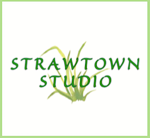by Susan Hellauer
12/6 – Newcomb, HRM 302: At first light I was walking along the snow-covered beach at Rich Lake, partially skimmed over with ice and dusted with fresh snow. The ravens were waking up and their “gronks” echoed in the frigid air. From across the lake came the calls of coyotes, more than one I thought, as the calls had different pitches. . . As I stood there, I imagined that it could have been five hundred, a thousand, or five thousand years ago. Other than wildlife, the only sounds were natural: the wind blowing through the conifers and snowflakes that were still falling. – Tom Lake
On a frigid day, it can seem as if most living things have fled the iron-grey Hudson. But under the water, in the sky overhead, on its banks, uplands and estuaries, the Hudson River is teeming with life year round. And there are dedicated naturalists who go out in search of its winter wildlife while the rest of us are curled up under a blanket, staring at fake life on TV.
You cold-weather couch potatoes, however, are in luck. These intrepid wildlife reporters make house calls, in the form of the Hudson River Almanac, a free weekly e-newsletter published by the New York State Department of Environmental Conservation (NYS DEC) Hudson River Estuary Program.
Decades of grassroots wildlife reporting

Adult bald eagle in flight. Photo: Mike Pogue
The Almanac, with more than 23,000 weekly readers, is coming up on its 24th birthday. Since its 1994 inception, it’s been edited by naturalist and educator Tom Lake, who lives within sight of the Hudson River in Dutchess County.
When he’s not editing the Almanac, Lake is out monitoring wildlife for the NYS DEC, or presenting programs on the natural history of the Hudson Valley to children and adults. Trained in anthropology, with experience as a Hudson Valley archeologist, Lake is following a lifelong passion:
As a child, I was fascinated by the idea that Native Americans— Indians—walked the very same forest and mountain trails that I walked (whenever I sneaked away from my parents). My love for anthropology/archaeology and natural history grew in tandem and, intellectually, I have never seen a space between those two disciplines.
Hudson River Miles (HRM)
The Hudson is measured north from Hudson River Mile 0 at the Battery at the southern tip of Manhattan. The George Washington Bridge is at HRM 12, the Tappan Zee 28, Beacon-Newburgh 62, Mid-Hudson 75, Kingston-Rhinecliff 95,, and the Federal Dam at Troy, the head of tidewater, at 153. The tidal section of the Hudson constitutes a bit less than half the total distance – 315 miles – from Lake Tear of the Clouds in Keene, NY, to the Battery.
The Almanac relies on Tom Lake, and he relies on a core of up to 20 regular and a dozen occasional contributors. They range from first graders to Ph.D.’s who submit everything from not-so-everyday adventures to poetic vignettes to scientific revelations. Lake sometimes annotates their contributions, selected to match his goal for the Almanac: “to capture moments that define the season.”
Scenes from the Hudson River Almanac: Wildlife encounters
From fragile songbirds to big black bears, and everything in between, real-life wildlife encounters are the bread and butter of the Almanac.
12/3 – Blooming Grove, HRM 55: As I was hiking in the back country of Schunnemunk Mountain State Park (the highest mountain in Orange County at 1,664 feet) I was surprised to encounter a large sow black bear and her nearly year-old cub basking in the late fall sun atop a rock outcrop. They looked as surprised as I was before sauntering off into the thick woods. – Ed McGowan

Yellow-bellied sapsucker. Photo: Patrick Coin, CC BY-SA 3.0
12/3 – Croton Point, HRM 35-34: Calm and clear, a grand morning for a walk. Sights along the way included an American kestrel and a large mixed flock of robins and cedar waxwings on the landfill, and a common loon fishing off the west bulkhead, seemingly as curious about me as I was of it. In Croton Bay on the south side four male buffleheads were acting out in a splashy show for a female that went from unimpressed to evasive. A final stop was rewarded with a hatful of prime shaggy mane mushrooms: an omelet for lunch! – Christopher Letts
12/8 – Columbia County, HRM 118: I stopped by the hamlet of Claverack to pick up a road-killed adult male yellow-bellied sapsucker to be used for a college study skin. Upon picking him up I discovered that he was still alive. I brought him home and an examination showed no broken bones or other injuries. I put him in a cardboard box and, after an hour, he started moving around. I took him out of the box, took him outside, and he happily flew away no worse for the wear. – Sal Cozzolino
Protecting Hudson Valley endangered species
There are those who would disturb, collect or harm wild creatures, so editor Lake takes care to obscure the exact location of sightings of endangered species.

Timber rattlesnake. Photo: Hudson River Almanac
11/19 – Rockland County: On a recent warm sunny day on a mountaintop in Rockland County, I came upon a timber rattlesnake, peacefully sunning itself on the trail. – Bob Meyer
[Many populations of timber rattlesnakes (Crotalus horridus) have been depleted or extirpated due to human persecution, collection, and habitat loss, which is why they are listed as a New York State Threatened Species. Currently, the rattlesnakes range as far north as Essex County in the Adirondacks. Because of this, entries such as this one are intentionally left vague other than to note its general presence in an area. Not disclosing exact locations of easily threatened flora and fauna such as eagle nests, snowy owls, orchids, and rattlesnake dens, becomes necessary given examples of problematic human intrusion. Tom Lake.]
The Hudson River Almanac and wildlife in the news
VIDEO: Whale in New York Harbor from Bjoern Kils on Vimeo.
Most wildlife observations fly well below the media’s radar, but sometimes the Almanac’s contributors are in the middle of a major news story.
11/19 – Manhattan, HRM 11-1: We set out in mid-morning on Day 4 [from the initial sighting] to see if the humpback whale was still in the Upper Bay of New York Harbor. Recent reports placed the whale off the Chelsea Piers (West 27th to West 22nd streets) and another off Hoboken, NJ (West 34th Street). In early afternoon a work boat in the vicinity of the George Washington Bridge reported the whale surfacing. We got there quickly and started tracking the whale again, keeping a safe distance. The Upper Bay of New York Harbor was teeming with tugs, barges, ferries and other commercial traffic, so once again we decided to just stay with it and coordinate with oncoming traffic in hopes of providing safe passage for the whale. Professional captains appreciated our guidance and steered clear of the whale.
In mid-afternoon the whale started moving in an east-west pattern and began breaching. Fish jumped out of the water in an attempt to get away . . . The whale had moved north with the flood tide but as the tide turned to ebb, the whale changed direction and headed back toward lower Manhattan. As the sun set, we lost visual contact with the whale and updated the Coast Guard to its last location so ships could be advised to be extra vigilant and operate at a safe speed in the area. – Paul Sieswerda, Bjoern Kils
Sighting and tracking: wildlife data
Counting and reporting on wildlife helps track the current and long-term health of the river and its creatures.

Hudson River skilletfish. Photo: Dan Tainow
12/8 – Manhattan, HRM 1: Shortly after noon we went to check our collection gear at The River Project’s sampling station on the lighthouse tender Lilac at Pier 25 in Hudson River Park. Our crab pots were empty but in our killifish traps we caught a sand shrimp (Crangon septemspinosa), four shore shrimp (Palaemonetes sp.), an 85 mm-long feather blenny (Hypsoblennius hentz), amphipods, isopods, and a small ctenophore the size of a blueberry. The number of sea squirts on our gear was increasing, in sizes ranging from grains of rice to green peas. – Melissa Rex, Leslie Torres, Jacqueline Wu
[The feather blenny is a small, scaleless, bottom-dwelling temperate marine fish that lives among rocks, pilings, and shellfish beds not unlike the naked goby and skilletfish. The feather blenny was added to the Hudson River Watershed Fish Fauna List in 1994 from a fish caught 11/20/93 by The River Project and identified by Norma Feinberg. Tom Lake.]
The Hudson Valley: a vibrant but fragile ecosystem

Tom Lake inspires a new generation of Hudson River advocates, at Plum Point in New Windsor, NY. Photo: courtesy Tom Lake
Those who read and enjoy the Almanac can’t help but see how full of life, but how fragile, the Hudson Valley ecosystem is, and how worthy of advocacy and protection. What does Tom Lake want his Hudson River Almanac readers (and all of us who care) to do?
Be a vigilant watchdog for misuse of the water and the surrounding uplands.
Vote for people who share your love and respect for the river and its attributes.
Learn more:
To subscribe to the weekly Hudson River Almanac—which also includes listings of natural history events in the Hudson Valley—use the form on the DEC’s Hudson River Almanac page.
To contribute your adventures or observations to the HRA, subscribe and see the requirements and procedures, included with each edition.
National Oceanic and Atmospheric Administration online tide and tidal current predictions are invaluable when planning Hudson River field trips.
For real-time information on Hudson River tides, weather and water conditions from twelve monitoring stations, visit the Hudson River Environmental Conditions Observing System website.
Sustainable Saturdays, a weekly feature that focuses on conservation, sustainability, recycling and healthy living, is sponsored by Green Meadow Waldorf School, Maria Luisa Boutique and Strawtown Studio.











